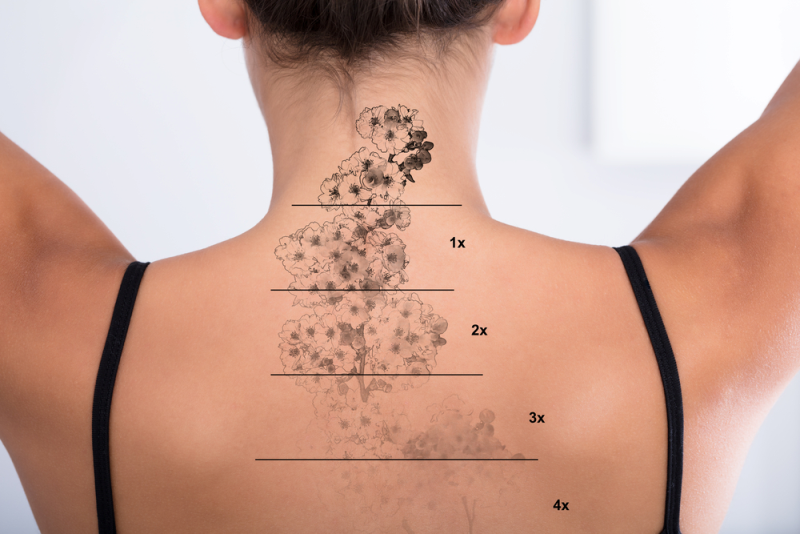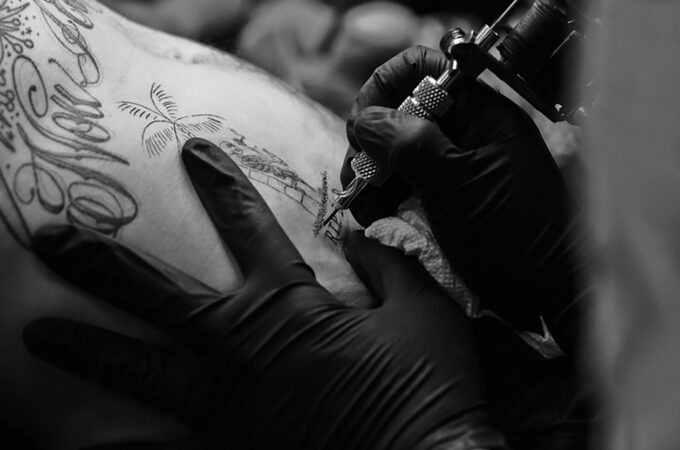
Tattoo Removal is a Feasible Option Today, But the Results May Differ
The human mind is fickle, especially about beauty and looks, because every move has a close relation to the current trends. Since trends keep changing, so also the perception of beauty. If you decide to go with the trend and have tattoos done on your body, think carefully because these are mostly permanent. The idea of tattoos often originates from various real-life experiences, incidents, interactions, and relationships that keep changing. It could trigger the need for changing some tattoos or removing them entirely to suit the changed situations. That is the reason for almost 17% of the people in the age group 18-50 years who have tattoos are eager to remove them, as revealed in a survey conducted by the American Academy of Dermatology in 2006. The trend remains, and you must gather information about tattoo removal before trying out the body art, say the experts at Candid Cosmedics.
If you regret having a tattoo done for whatever reason, removing it is the first thought that crosses your mind. Despite the claims of tattoos being permanent, it is possible to remove tattoos if you want. Although there are many ways of tattoo removal, it is difficult to ensure complete removal for everyone. Even the most advanced tattoo removal technique might have its limitation, and it will be wrong to assume that all tattoos are removable.
Who can expect good results in tattoo removal?
It might sound strange that older tattoos are easy to remove, as the amateur tattoos, compared to the newer ones. Tattoos created with green, dark blue, brown, and black inks are easier to remove, but darker and bigger are the designs, the longer it takes for removal. The cost is also higher as compared to removing smaller, less colorful, and lighter tattoos. The process of tattoo removal has some side effects, and it might be difficult to remove tattoos from people with darker skin and those with herpes or eczema or some other health condition that affects the skin.
Laser removal is popular

The most effective and sure way to remove tattoos is to use the laser removal procedure, which is most popular. The treatment consists of focusing laser beams tuned to specific wavelengths at the spots that have tattoos. Laser light beams have intense cutting power that can even cut steel or diamond and are useful in de-inking tattoos. A Q-switched laser is most preferred for tattoo removal as the laser beams energy heats the ink and dissolves it to make it finally disappear. Several treatments over many weeks might be necessary for complete tattoo removal depending on various factors, including the skin quality and the extent of the tattoo design, how big or small it is.
The simpler is the tattoo design, the older it is, and fewer are the colors, faster and less expensive would be the tattoo removal procedure.
Will the tattoo leave a scar?
Since many patients want natural skin as they can receive, it is possible to complete the tattoo removal process without the tattoo scarring. However, if you already have a scar, expect it to remain. Any scarring that remains after the tattoo removal process is mostly carried out from the time of applying the original tattoo. When you use the proper laser protocols, it is unlikely to result in a scar from a Q-switched laser treatment. It is widespread for a tattoo to feature the pre-existing scarring from its previous application.
A Q-switched laser treats the skin and targets it, breaking down the tattoo pigment in our skin. If any previous pre-existing scarring exists, it will break the dye within the scar tissue. Once the entire tattoo removal process completes, the ink will eliminate from the location, and any scarring from the original tissues will probably remain the same. During the initial consultations, you can touch it and check if the pre-existing scarring exists while assessing the tattoo. You can mark it in the patients’ records and inform patients that the laser treatment will not eliminate the scar tissue. Such a Q-switched laser is not an excellent tool for scar revision and will not significantly improve the scarring to stay. Many specialists use fractional lasers, including the fractional CO2 laser. Such a piece of equipment will resurface the scarred skin after the tattoo removal process.
The Side Effects

Side effects are an expected part of the tattoo removal process. Most of the side effects are an essential part of the immune response that aids in the elimination of the ink from the skin for most patients.
Even if you opt for a tattoo removal process, you can seek a reputed professional who can guide you throughout the process. Moreover, even if there are a few side effects of the tattoo removal process, one can easily find the benefits that one might rightfully take leverage of.
Wrong Protocols
It might not occur common to receive scarring from the laser tattoo removal therapy sessions. However, it is still possible with incorrect protocols. For instance, if you use excessive fluence while the professional treat the tattoo, it causes unwanted side effects, such as immediate pinpoint bleeding.
Improper Aftercare
A significant risk for scarring is improper aftercare. Even if the professional performs the task correctly, the patient might fail to adhere to it. Most of the time, the patients might forget to follow the aftercare instructions. Blisters and scabs are one of the common side effects that are crucial in the tattoo removal healing process. One should remember that picking scabs can allow scarring, coupled with any other means of improper aftercare. When you discuss aftercare instructions with your patients, ensure that you emphasize their role in the outcome of their tattoo removal process. Furthermore, patients who possess a history of keloids might predispose it to scar. This is why it is essential to take into account the detailed medical history of every patient.
To ensure satisfactory tattoo removal results, be ready to devote more time, spend more money and choose the most effective tattoo removal process with minimal side effects.




